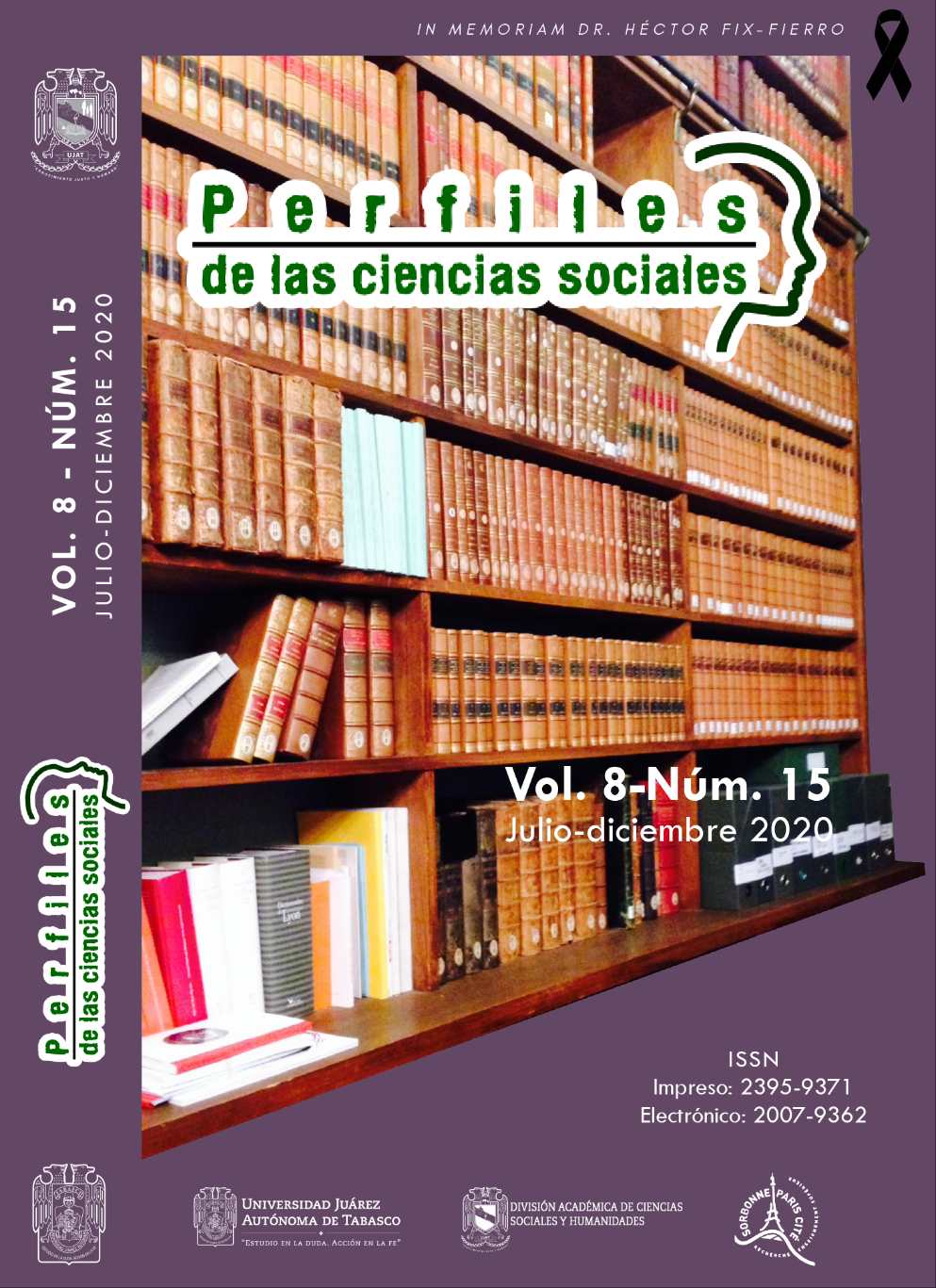Idioma
Información
PERFILES DE LAS CIENCIAS SOCIALES, Volumen 10, Número 19, enero-junio 2024, es una publicación semestral editada por la Universidad Juárez Autónoma de Tabasco, Av. Universidad S/N, Zona de la Cultura, Col. Magisterial, C.P. 86040, Villahermosa Tabasco, México. Tel. (+52) (933) 358 1500 Ext. 6309, https://revistas.ujat.mx/index.php/perfiles, perfilescsdacsyh@ujat.mx. Editor responsable: Pedro Humberto Haddad Bernat. Reserva de derechos al uso exclusivo 04-2013-070514592700-203, ISSN: 2007-9362, ambos otorgados por el Instituto Nacional del Derecho de Autor. Responsable de la última actualización de este número, Pedro Humberto Haddad Bernat. Universidad Juárez Autónoma de Tabasco, Av. Universidad S/N, Zona de la Cultura, Col. Magisterial, Centro, Tabasco. C.P. 86040. Fecha de última actualización, 26 de junio de 2024.

